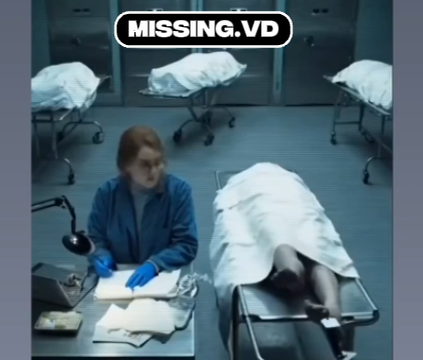Optical illusions have always fascinated us, captivating our attention and challenging how we perceive the world. These illusions are more than mere tricks of the eye—they reveal how our brains process visual information and interpret meaning. A recent viral optical illusion involves an ordinary-looking mountain that hides a deeper mystery. What you see in this image—a hugging couple or a dinosaur—may provide insight into whether your thinking leans more toward the logical, detail-oriented left brain or the creative, big-picture right brain.
Let’s explore the magic behind this intriguing visual challenge and uncover what it says about your mind.

The Hidden Mystery in the Mountain
At first glance, the image appears to be a standard mountain landscape, complete with rocky peaks, shadows, and natural contours. But a closer look reveals something far more captivating. Depending on your perception, you might see one of two hidden images:
- A hugging couple, their forms subtly outlined by the mountain’s shapes and shadows.
- A dinosaur, its silhouette cleverly integrated into the mountain’s contours.
What you notice first isn’t random—it reflects how your brain processes information. Let’s dive deeper into the meaning behind these two perspectives and what they reveal about your thinking style.
If You See the Hugging Couple: Logical Left-Brain Thinking
Spotting the hugging couple suggests that you are likely more left-brained. This means your thinking tends to be structured, analytical, and detail-focused. Here’s what that says about you:
- Analytical and Precise: Left-brain thinkers excel in tasks requiring logic and order. You likely enjoy solving puzzles, analyzing data, or making decisions rooted in facts.
- Highly Observant: Seeing the couple indicates you notice details that others might overlook, a skill that lends itself to problem-solving and critical thinking.
- Organized and Practical: You thrive in environments where planning and structure are key. Whether managing a project or tackling a complex challenge, you prefer clear steps and definitive outcomes.
Your attention to detail and logical approach help you excel in roles that require precision and clarity, but they might also limit your focus on the bigger picture at times.
If You See the Dinosaur: Creative Right-Brain Thinking
If your eyes are drawn to the dinosaur, you likely lean toward right-brain dominance. This reflects a more intuitive and imaginative way of thinking. Here’s what it means:
- Big-Picture Perspective: You’re less concerned with small details and more focused on interpreting the broader meaning behind things.
- Expressive and Artistic: A mind that sees the dinosaur often thrives in creative fields, from painting and writing to brainstorming innovative solutions.
- Instinct-Driven: Rather than following rigid logic, you trust your instincts and make connections that others might miss.
Right-brained individuals tend to excel in roles that require creativity, emotional intelligence, and the ability to innovate. However, they may sometimes overlook practical details in pursuit of their vision.
If You See Both: A Balanced Mind
Noticed both the hugging couple and the dinosaur? This indicates a rare balance between left- and right-brain thinking. You can seamlessly switch between logical analysis and creative imagination depending on the situation. Here’s what this balance means for you:
- Versatile Problem Solver: You approach challenges from multiple angles, leveraging both logic and creativity to find unique solutions.
- Enhanced Perception: Your ability to see both perspectives demonstrates strong observational skills and adaptability.
- Innovative Thinker: You can connect seemingly unrelated ideas, making you a valuable asset in diverse scenarios.
This blend of logical and creative thinking gives you a significant edge in navigating complex problems and generating innovative ideas.
The Science Behind the Illusion
Optical illusions like this one work by playing on how our brains interpret visual stimuli. The mountain image relies on:
- Shadows and Shapes: Subtle patterns create recognizable forms that the brain tries to decode.
- Selective Focus: What your brain notices first depends on your perception style.
- Cognitive Biases: Past experiences and personal preferences influence how you interpret the image.
While fun, these illusions also highlight the brain’s incredible complexity and how both hemispheres collaborate on most tasks.
Why Optical Illusions Captivate Us
Optical illusions resonate with us for several reasons:
- Mental Stimulation: They challenge us to think differently and step outside our usual patterns of interpretation.
- Curiosity: Illusions spark a sense of wonder, encouraging us to explore hidden meanings.
- Social Interaction: Sharing and discussing illusions fosters engagement and invites diverse perspectives.
How to Sharpen Your Perception Skills
Want to get better at spotting hidden details? Here are some tips:
- Practice Mindfulness: Slow down and observe closely. Mindfulness can help you notice subtle patterns and shapes.
- Exercise Both Brain Hemispheres: Solve puzzles to train your left brain and engage in creative activities like drawing to stimulate your right brain.
- Experiment with Perspectives: Sometimes flipping or tilting an image can reveal entirely new details.
Final Thoughts: The Power of Perception
Whether you saw the hugging couple, the dinosaur, or both, this optical illusion is a fascinating reminder of how unique and diverse human perception can be. It’s not just about what you see—it’s about how your brain interprets the world. So, what did you spot in the mountain? Share your experience with others and see how their interpretations differ. You might spark a lively debate or even discover a new way of seeing things. After all, the magic of illusions lies in their ability to challenge and inspire us.





